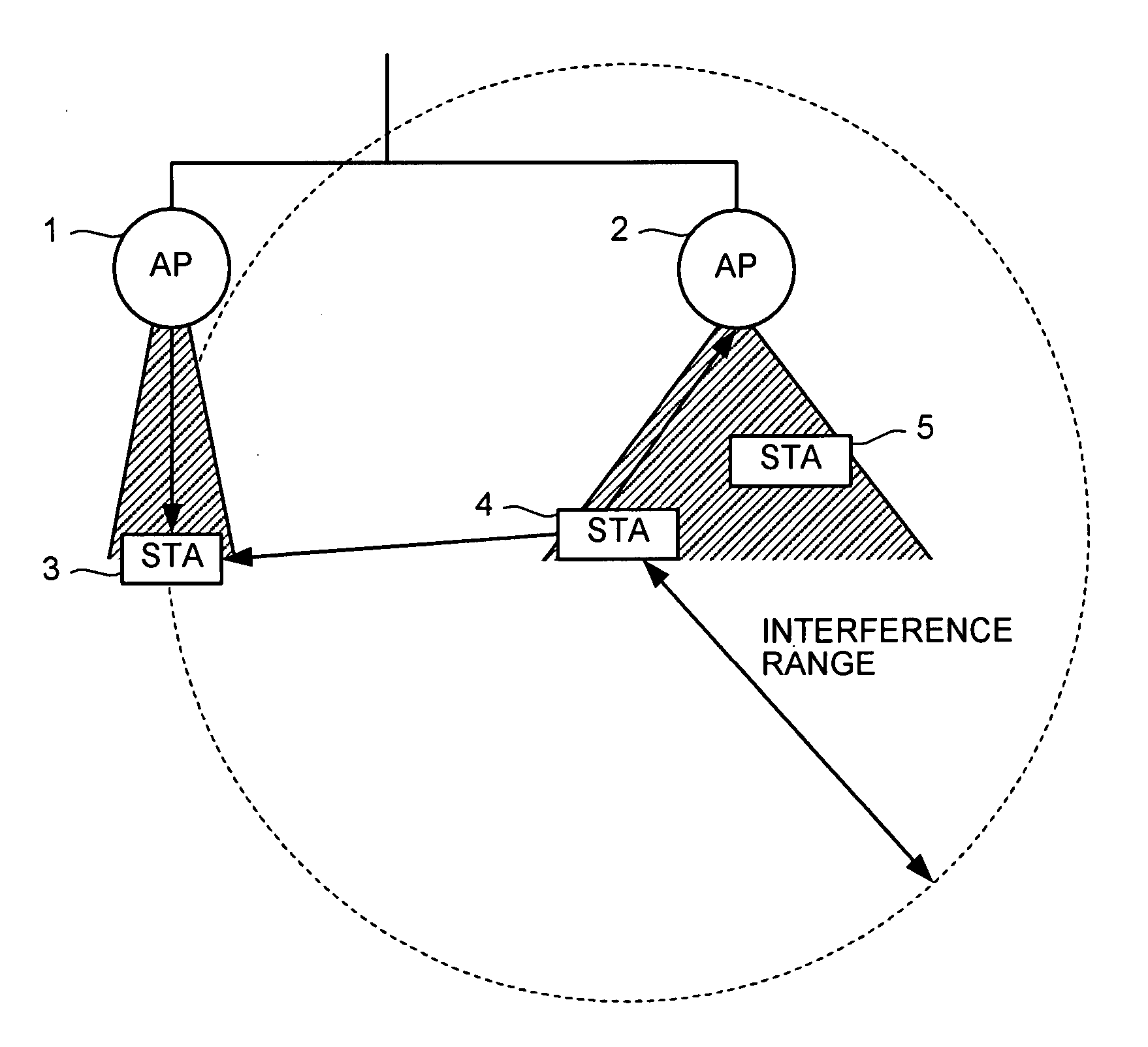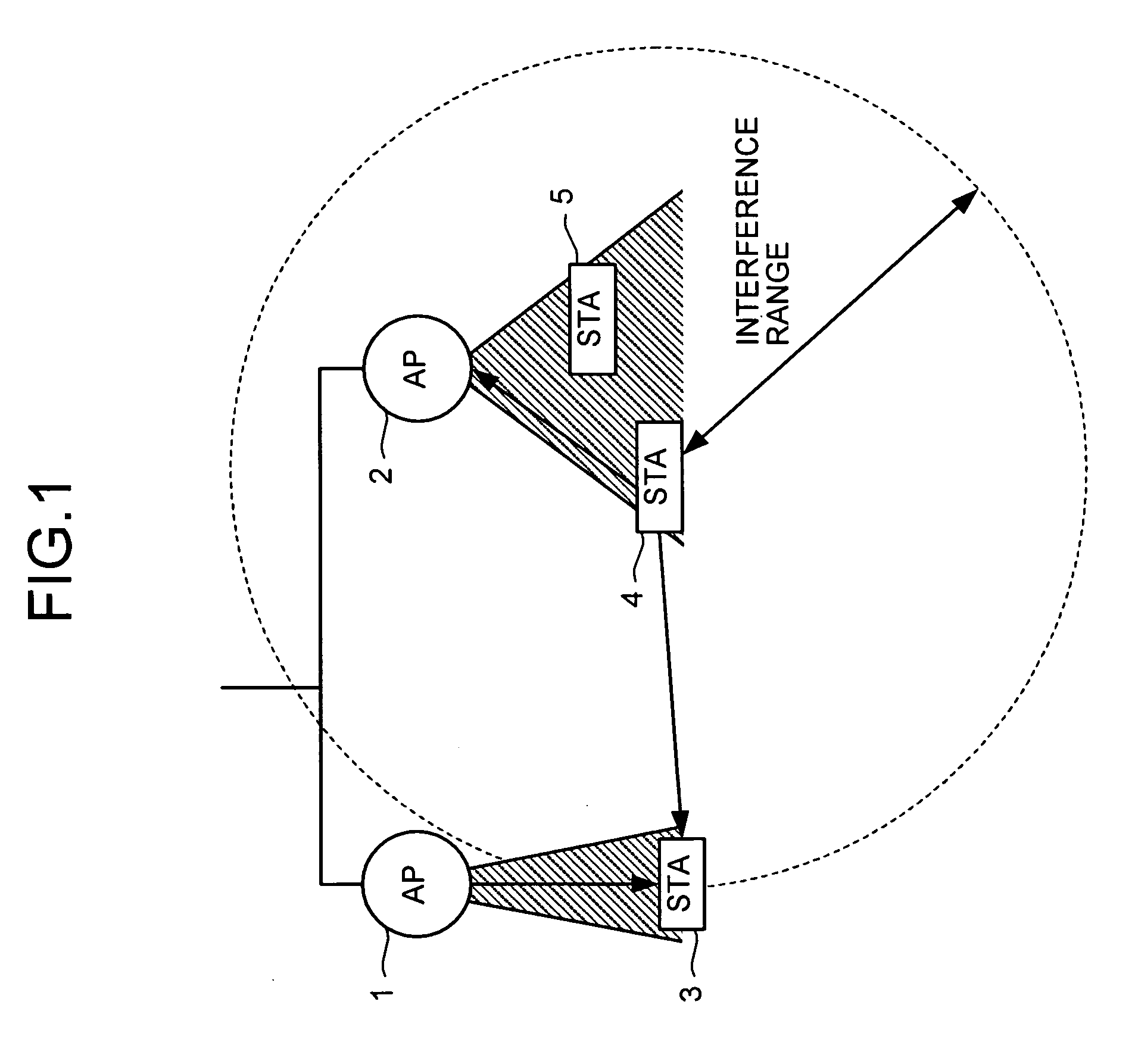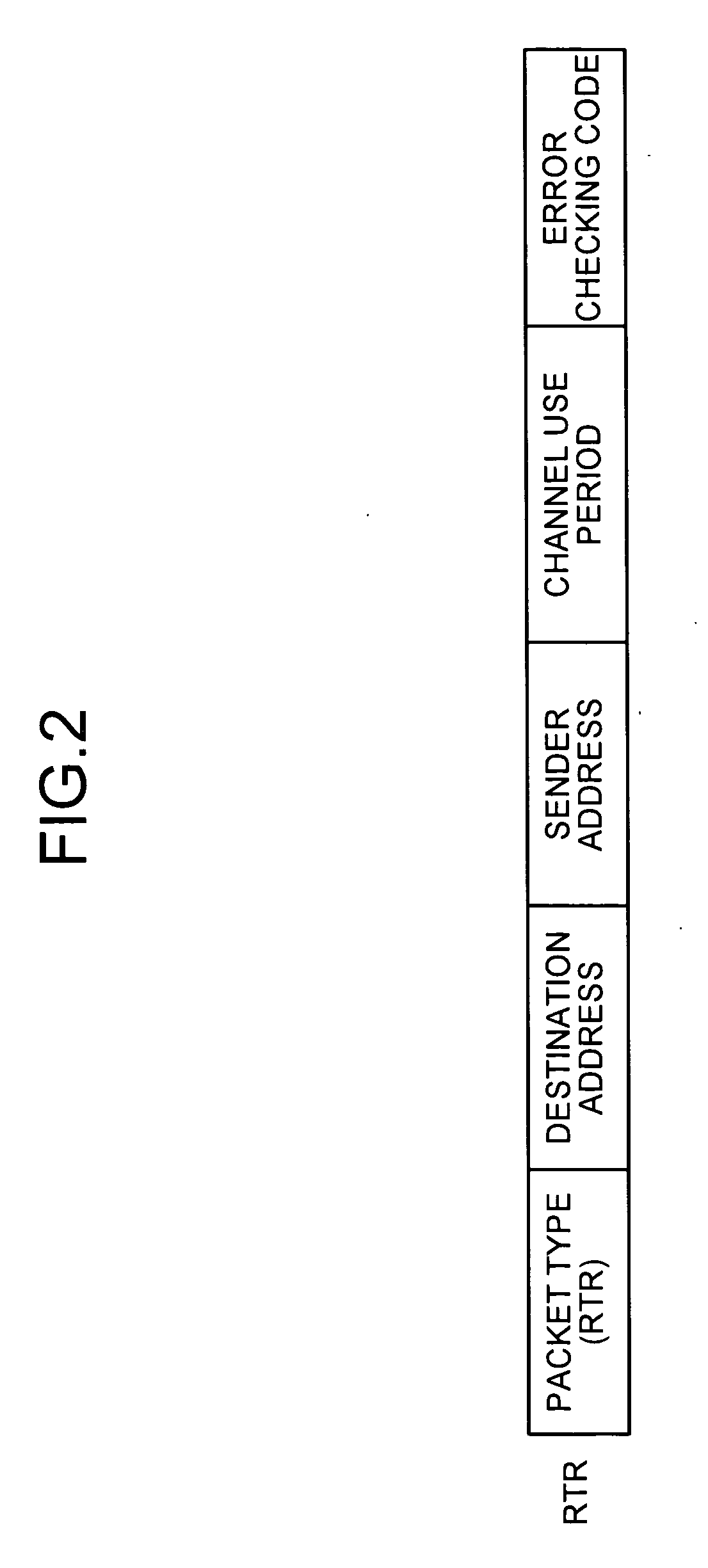Communication method, radio terminal and base station
a communication method and radio terminal technology, applied in the field of communication methods, can solve the problems of affecting the transmission speed of packets, so as to prevent packet collision
- Summary
- Abstract
- Description
- Claims
- Application Information
AI Technical Summary
Benefits of technology
Problems solved by technology
Method used
Image
Examples
first embodiment
[0030]FIG. 1 depicts the configuration of a communication system capable of realizing the communication method according to the present invention, in which the communication status between a base station (AP) and a radio terminal (STA) is shown. In this communication system, a case that packet communication is carried out in the state that an STA3 belongs to an AP1, and an STA4 and an STA5 belong to an AP2 is assumed. The STA4 is located in the communication range of the STA3, and the STA3 is located in an interference range of the STA4.
[0031]FIG. 2 depicts a request-to-receive (RTR) format according to a first embodiment of the present invention. The RTR frame includes a packet type field for discriminating the packets (RTR, RTS, and CTS) from each other, a destination address field, a sender address field, a channel use period field indicating the use period of a channel by the wireless packet, and an error-checking-code field added with a calculation result for checking a bit er...
second embodiment
[0045] A communication method according to a second embodiment of the present invention will now be explained. Since the configuration of the communication system is the same as that of FIG. 1 in the first embodiment, like reference numerals are designated with like parts, and explanation thereof is omitted. The respective frame formats used in the second embodiment are the same as those of FIGS. 2, 3, and 4 in the first embodiment.
[0046] The communication method according to the second embodiment will be explained specifically, with reference to the accompanying drawings. FIG. 6 depicts the communication method according to the second embodiment only the operation different from that of the first embodiment will be explained below.
[0047] Since the STA4 could not transmit the CTS frame due to the influence of the hidden terminal, in spite of having received the RTS frame from the AP2 in the past (steps S6 and S8), the STA4 now in the transmission-enabled state in the processing at...
third embodiment
[0051] A communication method according to a third embodiment of the present invention will be explained next. FIG. 7 depicts the configuration of a communication system capable of realizing the communication method according to the present invention, wherein the communication status between the AP and the STA, and the communication status of the AP using the same frequency are shown. In this communication system, a case that packet communication is carried out in the state that the STA3 belongs to the AP1, and the STA4 and the STA5 belong to the AP2 is assumed. The AP2 is located in the communication range of the STA3, and the STA3 is located in the interference range of the AP2. The respective frame formats used in the third embodiment are the same as shown in FIGS. 2, 3, and 4 in the first embodiment.
[0052] The communication method according to the third embodiment will be explained specifically with reference to the accompanying drawings. FIG. 8 depicts the communication method...
PUM
 Login to View More
Login to View More Abstract
Description
Claims
Application Information
 Login to View More
Login to View More - R&D
- Intellectual Property
- Life Sciences
- Materials
- Tech Scout
- Unparalleled Data Quality
- Higher Quality Content
- 60% Fewer Hallucinations
Browse by: Latest US Patents, China's latest patents, Technical Efficacy Thesaurus, Application Domain, Technology Topic, Popular Technical Reports.
© 2025 PatSnap. All rights reserved.Legal|Privacy policy|Modern Slavery Act Transparency Statement|Sitemap|About US| Contact US: help@patsnap.com



